Search Result
Results for "
inactive control
" in MedChemExpress (MCE) Product Catalog:
1
Biochemical Assay Reagents
| Cat. No. |
Product Name |
Target |
Research Areas |
Chemical Structure |
-
- HY-121954
-
|
Nec-1 (inactive control)
|
Others
|
Cancer
|
|
Necrostatin-1 (Nec-1) (inactive control) is an inactive analog of Necrostatin-1 (HY-15760). Necrostatin-1 is a potent necroptosis inhibitor .
|
-
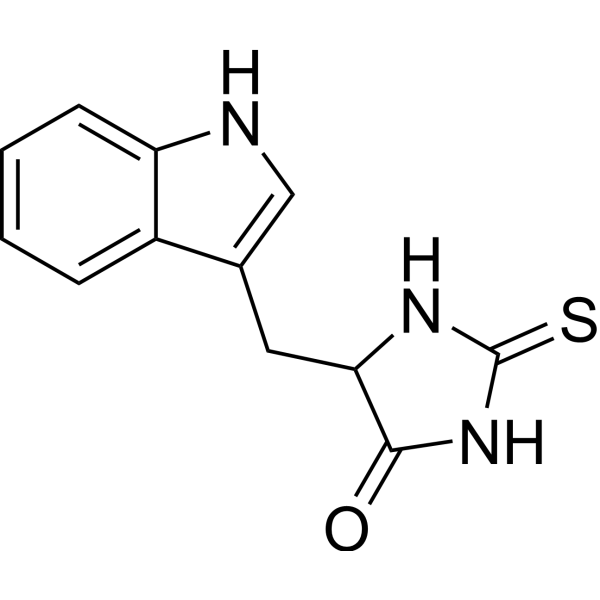
-
- HY-136453A
-
|
|
Others
|
Cancer
|
|
CR-1-30-B is an inactive enantiomer of CR-1-31-B. CR-1-30-B, as a control, is inactive against eIF4A and has no apparent effect on the induction of MUC1-C translation .
|
-

-
- HY-15517B
-
|
|
Others
|
Cancer
|
|
KN-92 hydrochloride is an inactive derivative of KN-93, without CaM kinase inhibitory activity. KN-92 hydrochloride is intended to be used as a control compound in studies designed to elucidate the antagonist activities of KN-93 .
|
-
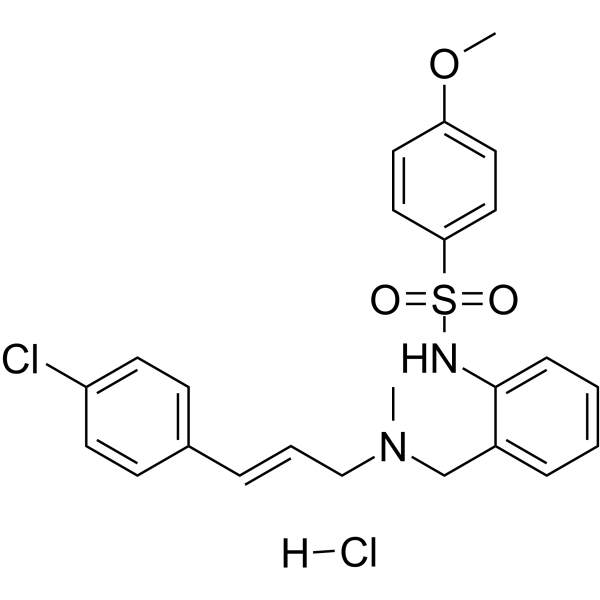
-
- HY-113894
-
|
|
Aurora Kinase
|
Cancer
|
|
Retreversine is an inactive control for Reversine. Reversine is a novel class of ATP-competitive Aurora kinase inhibitor .
|
-
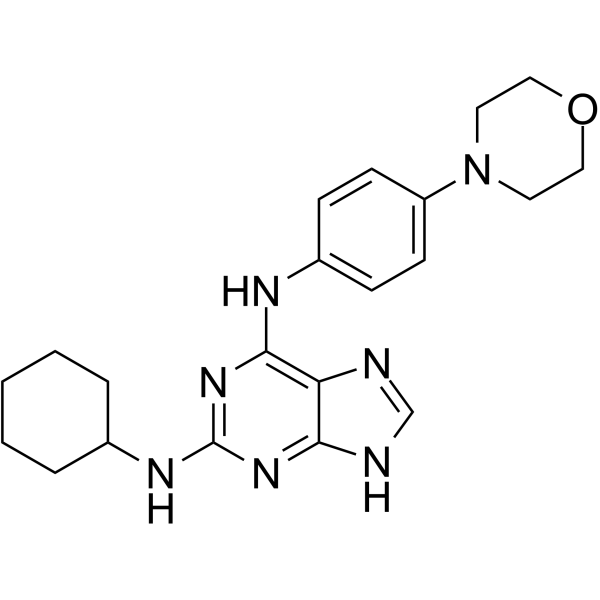
-
- HY-145081
-
|
|
Others
|
Infection
|
|
Pitnot-2 is an inactive analog of clathrin inhibitor Pitstop 2. Pitnot-2 can be used as negative control .
|
-
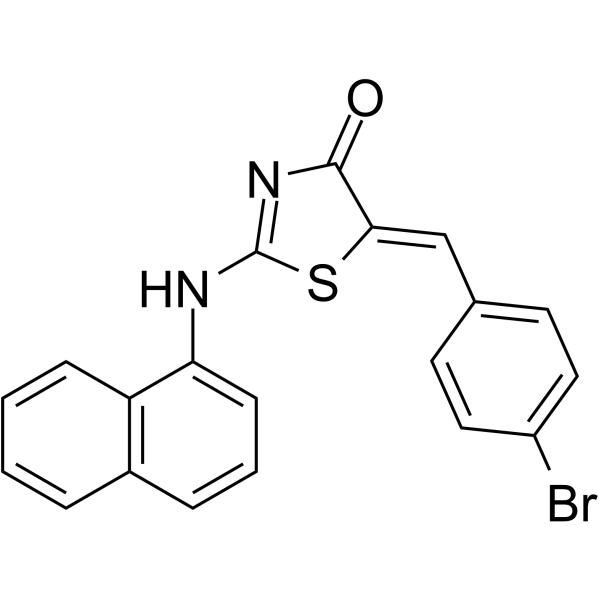
-
- HY-118421
-
|
|
Parasite
HDAC
|
Infection
|
|
Nullscript is a negative control for Scriptaid. Nullscript is a known inactive analog of Scriptaid . Scriptaid is a representative HDAC inhibitor . Nullscript inhibits Cryptosporidium (C. parvum) growth with the IC50 value of 2.1 μM .
|
-
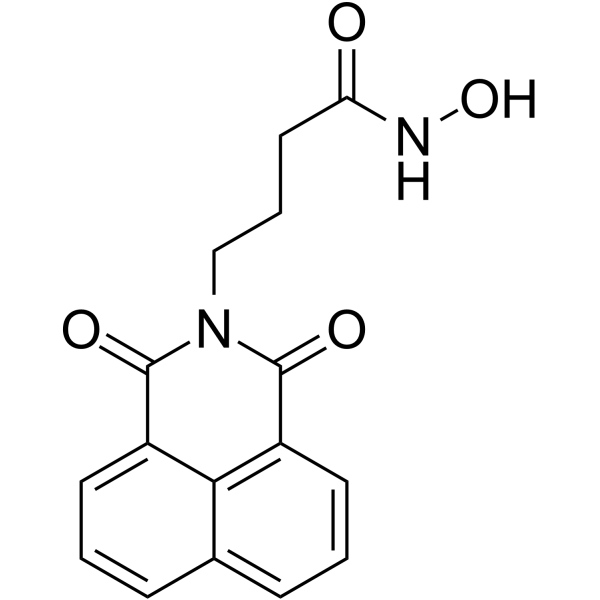
-
- HY-15517
-
|
|
Others
|
Cancer
|
|
KN-92 is an inactive derivative of KN-93, without CaM kinase inhibitory activity. KN-92 is intended to be used as a control compound in studies designed to elucidate the antagonist activities of KN-93. KN-93 is a cell-permeable, reversible and competitive CaMKII inhibitor .
|
-

-
- HY-15517A
-
|
|
Others
|
Cancer
|
|
KN-92 phosphate is an inactive derivative of KN-93, without CaM kinase inhibitory activity. KN-92 phosphate is intended to be used as a control compound in studies designed to elucidate the antagonist activities of KN-93. KN-93 is a cell-permeable, reversible and competitive CaMKII inhibitor .
|
-
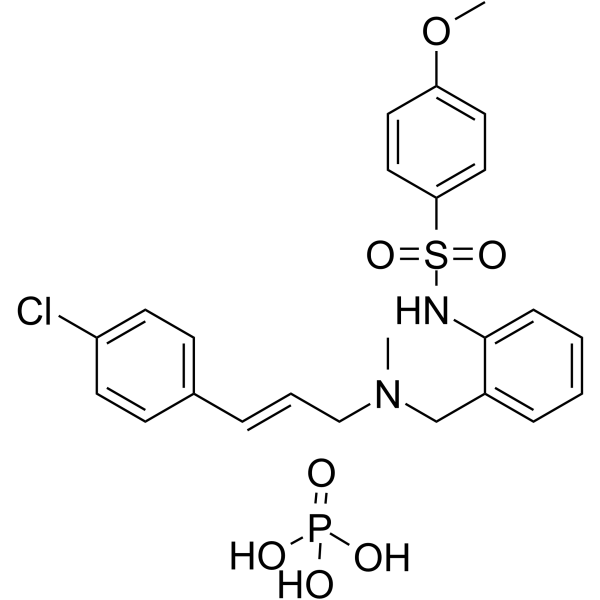
-
- HY-16994
-
|
|
WDR5
|
Cancer
|
|
OICR-0547 is a negative control, closely related derivative of OICR-9429 (HY-16993). OICR-9429 is a novel small-molecule antagonist of the Wdr5-MLL interaction. OICR-0547 is an inactive control compound that no longer binds to WDR5 .
|
-

-
- HY-119857
-
|
SIRT2 Inhibitor,inactive control
|
Sirtuin
|
Neurological Disease
|
|
AGK7 is a potent inhibitor of sirtuin 2 (SIRT2). AGK7 rescues alpha-synuclein toxicity and modified inclusion morphology in a cellular model of Parkinson's disease. AGK7 protects against dopaminergic cell death both in vitro and in a Drosophila model of Parkinson's disease .
|
-
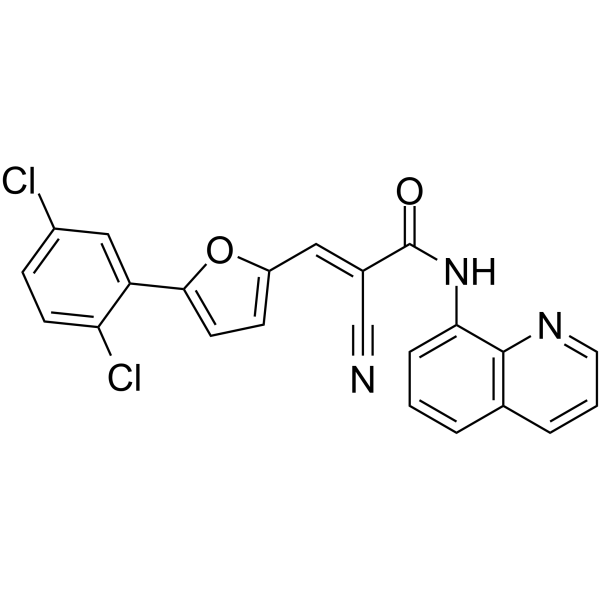
-
- HY-153734
-
|
|
Others
|
Others
|
|
Inactive ASO (in vivo) sodium is an inactive Antisense Oligonucleotide. ASO is a class of oligonucleotide molecules, usually composed of 20-30 bases, used to interfere with or regulate gene expression. Inactive ASO (in vivo) sodium is not targeted in the rodent genome and can be used as a negative control for Tofersen. Inactive ASO (in vivo) sodium contains thiophosphate skeleton modification and MOE modification. Cytosine in Inactive ASO (in vivo) is 5' methylcytosine. See References for the location of chemical modifications
|
-
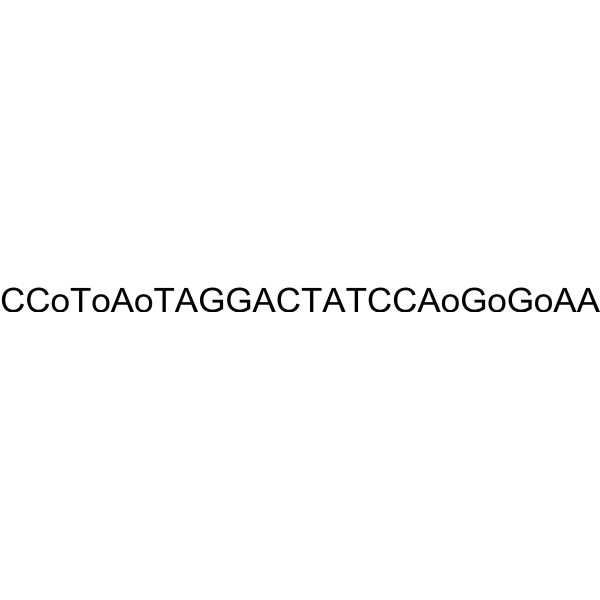
-
- HY-126300A
-
|
|
Histone Methyltransferase
|
Cancer
|
|
SGC6870N is inactive against PRMT6 and can be utilized as a negative control. SGC6870N is an inactive enantiomer of SGC6870 (HY-126300) .
|
-

-
- HY-148745
-
|
|
HSP
|
Cancer
|
|
JG-258 is an inactive negative control for Hsp70 inhibitors .
|
-
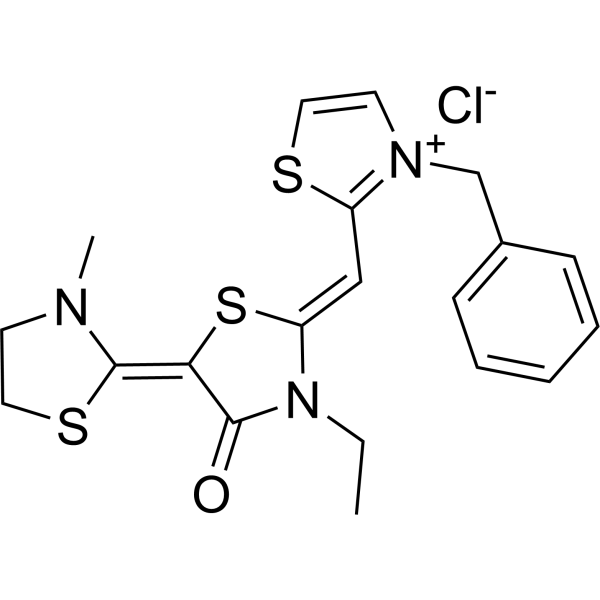
-
- HY-120343
-
-
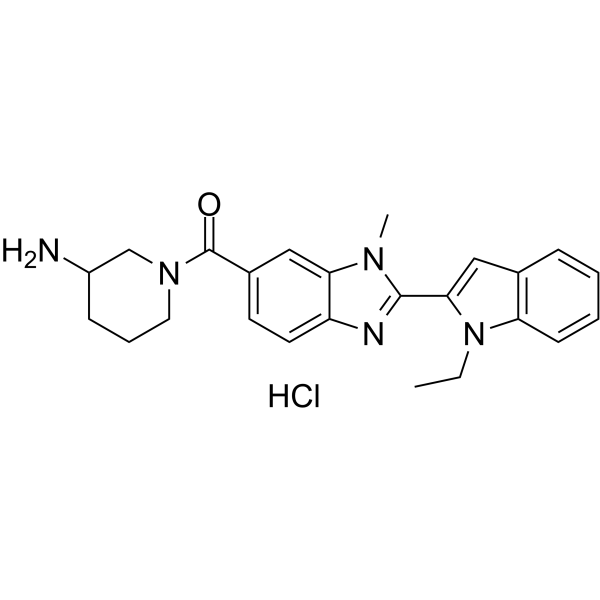
-
- HY-106029
-
|
α-TPA
|
Others
|
Cancer
|
|
4α-TPA is an inactive form of TPA, and is used as a negative control for TPA-activated events .
|
-
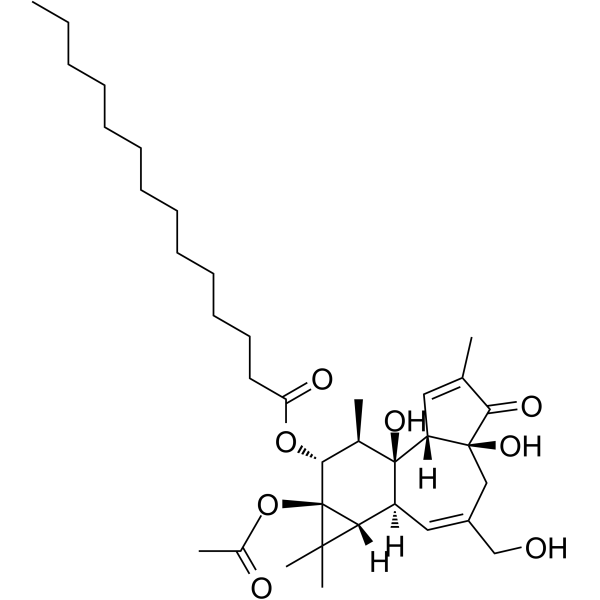
-
- HY-121733
-
-
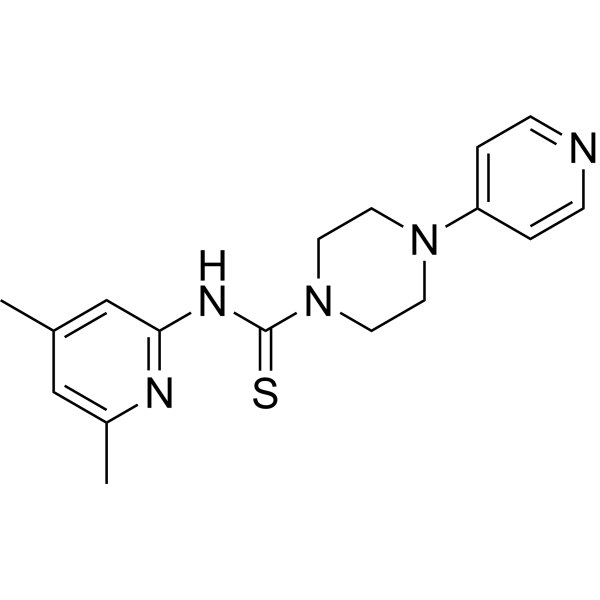
-
- HY-154843
-
|
|
Others
|
Cancer
|
|
C-Gem is a control molecule of S-Gem (HY-154842). C-Gem is completely inactive under experimental conditions .
|
-
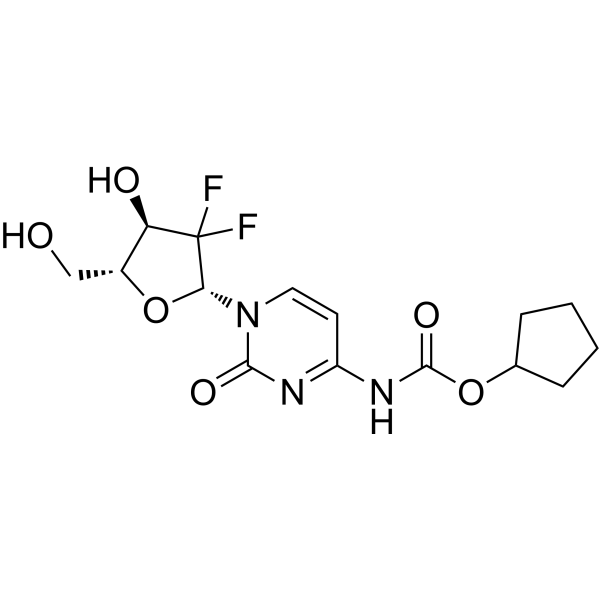
-
- HY-107477
-
|
|
Epigenetic Reader Domain
|
Cancer
|
|
GSK8573 is an inactive control compound for GSK2801 (acetyl-lysine competitive inhibitor of BAZ2A and BAZ2B bromodomains). GSK8573 has binding activity to BRD9 with a Kd value of 1.04 μM and is inactive against BAZ2A/B and other bromodomain familiy. GSK8573 can be used as a structurally related negative control compound in biological experiments .
|
-
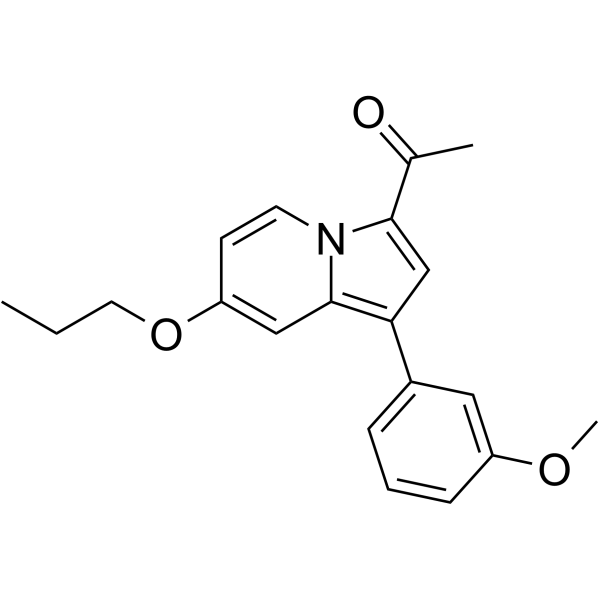
-
- HY-153887
-
|
|
Others
|
Others
|
|
HyT36(-Cl) is the inactive control compound of HyT36, a small molecule hydrophobic tag compound that can be used in protein folding research .
|
-
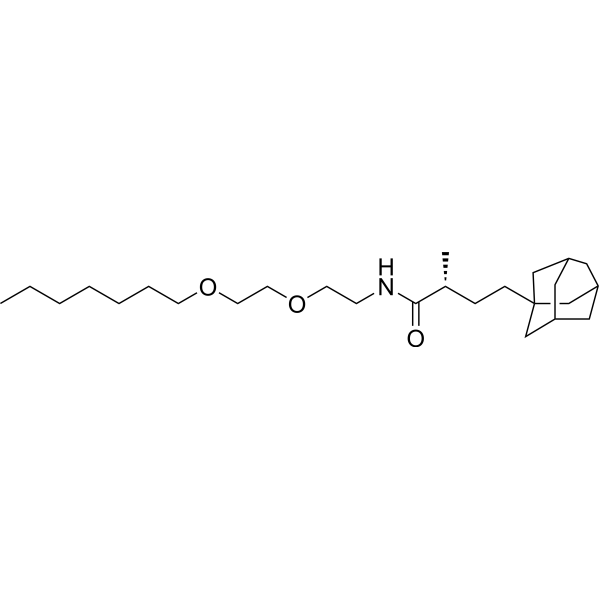
-
- HY-13851
-
|
|
PDK-1
|
Others
|
|
PS47 is an inactive E-isomer of PS48. PS48 is an activator of PDK1. PS47 can be used as a negative control for PS48 .
|
-
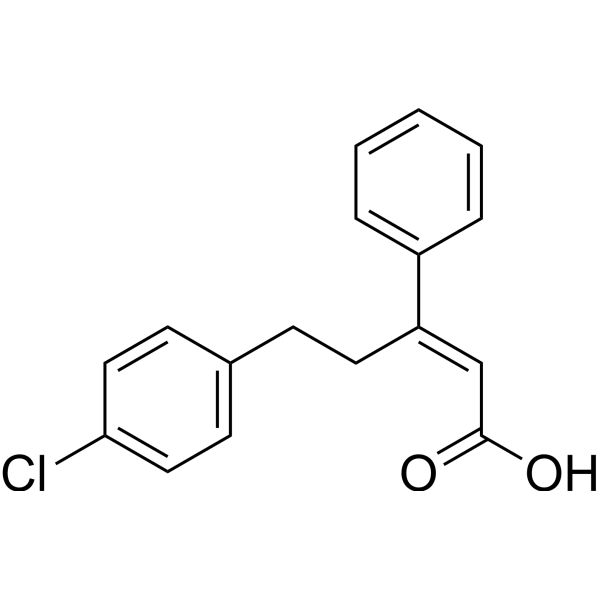
-
- HY-135843
-
|
|
Others
|
Cancer
|
|
TH-263, a diaryl sulfonamide derivative, is inactive toward both LIMK1 and LIMK2 and thus can be used as negative control for TH-257 .
|
-

-
- HY-145056
-
|
|
Others
|
Cancer
|
|
ART615 is the related isomer of ART558. ART615, the inactive of ART558, elicits <10% Polθ inhibition at 12 µM, thus serving as a control for ART558 (IC50=7.9 nM) .
|
-
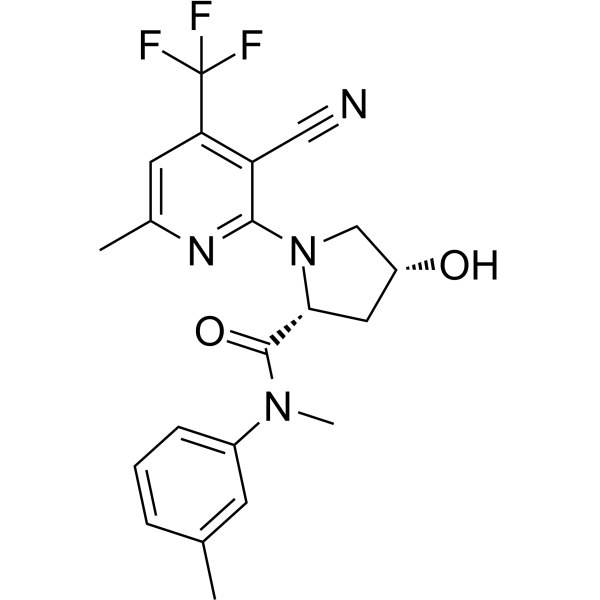
-
- HY-108437
-
|
|
Wnt
|
Infection
Cancer
|
|
exo-IWR-1, an inactive stereoisomer of Endo-IWR-1, is a negative control of IWR-1 (HY-12238). IWR-1 is a tankyrase inhibitor which inhibits Wnt/β-catenin signaling pathway .
|
-
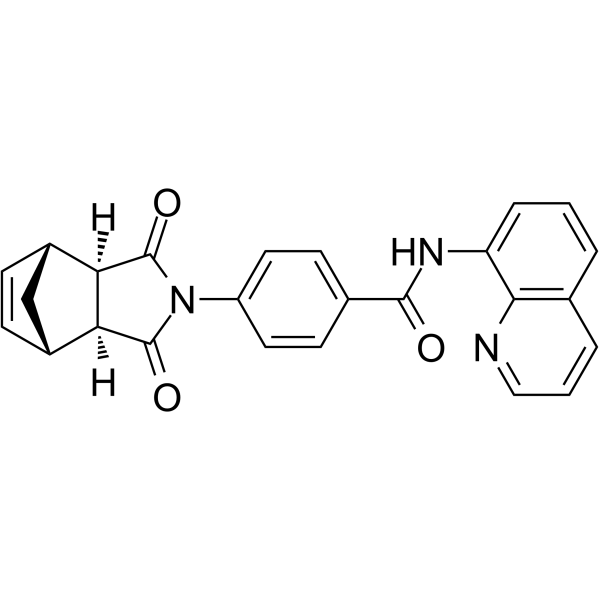
-
- HY-125143
-
|
|
MAGL
|
Metabolic Disease
|
|
ABC34 is an inactive control compound of JJH260. ABC34 does not inhibit the fluorophosphonate reactivity or fatty acid esters of hydroxy fatty acid (FAHFA) hydrolysis activity of AIG1. ABC34 can inhibit both ABHD6 and PPT122 .
|
-
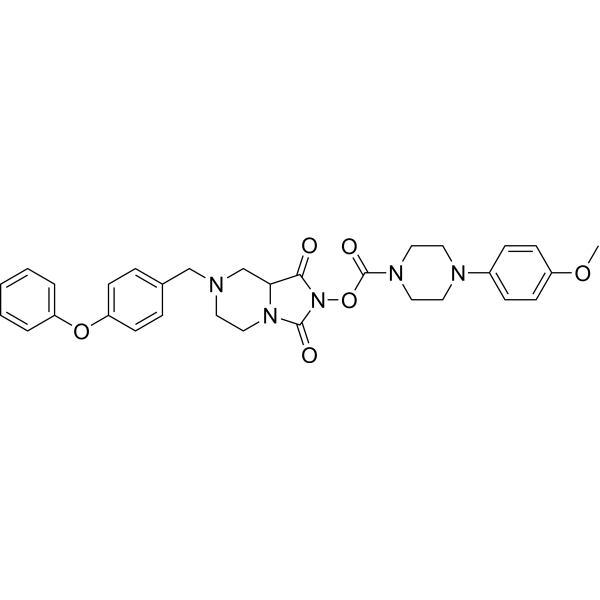
-
- HY-115682
-
|
|
Mas-related G-protein-coupled Receptor (MRGPR)
|
Others
|
|
(S)-ZINC-3573 is an inactive enantiomer of ZINC-3573. (R)-ZINC-3573 is a selective MRGPRX2 agonist. (S)-ZINC-3573 and (R)-ZINC3573 are effective and internally controlled probe-pairs for investigating the biology of primate-exclusive receptor .
|
-
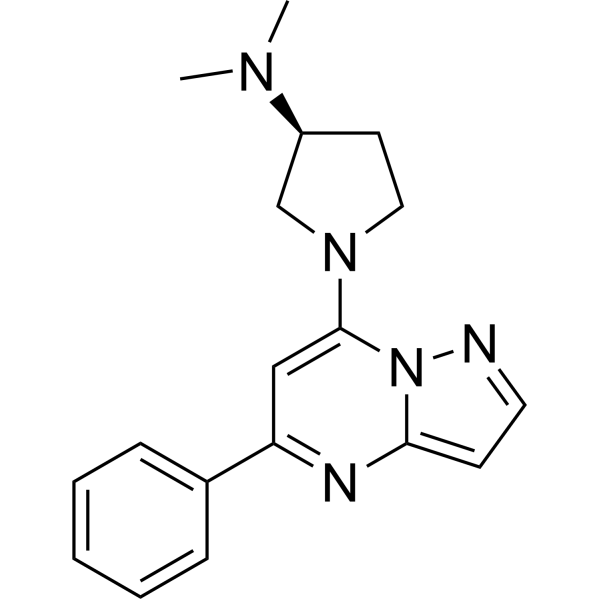
-
- HY-P3882
-
|
|
Amino Acid Derivatives
|
Neurological Disease
|
|
Fmoc-Ala-Glu-Gln-Lys-NH2 (AEQK) is a tetrapeptide. Fmoc-Ala-Glu-Gln-Lys-NH2 is the inactive control for Fmoc-Ala-Glu-Asn-Lys-NH2 (AENK) peptide inhibitor. AENK blocks proteolysis of UNC5C protein .
|
-
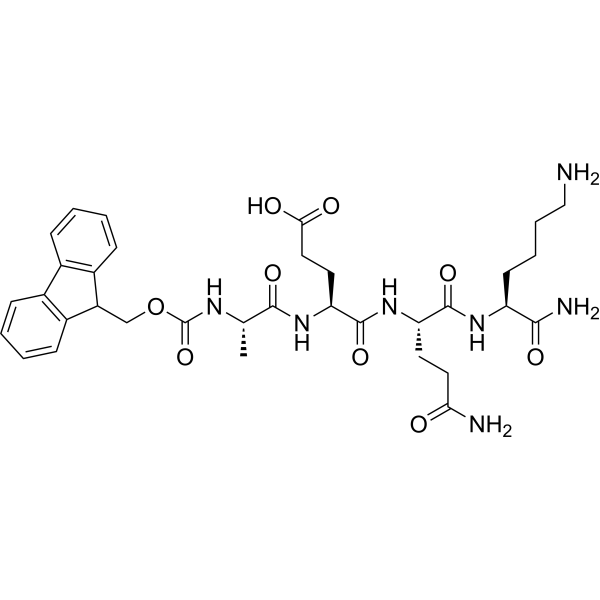
-
- HY-111457
-
|
|
Others
|
Inflammation/Immunology
|
|
BAY-677 is an inactive control for BAY-678. BAY-678 is an orally bioavailable, highly potent, selective and cell-permeable inhibitor of human neutrophil elastase (HNE), with an IC50 of 20 nM . BAY-678 is also nominated as a chemical probe to the public via the Structural Genomics Consortium (SGC) .
|
-

-
- HY-116429A
-
|
|
Reactive Oxygen Species
|
Inflammation/Immunology
|
|
7(S)-Maresin 1 is an inactive 7(S) exomer of Maresin 1, containing a 7(R) hydroxyl group. It can be used as a negative control. Maresin 1 is a specific regulator of endogenous DHA production in the human body, which can stimulate the production and secretion of intracellular Ca 2+ .
|
-
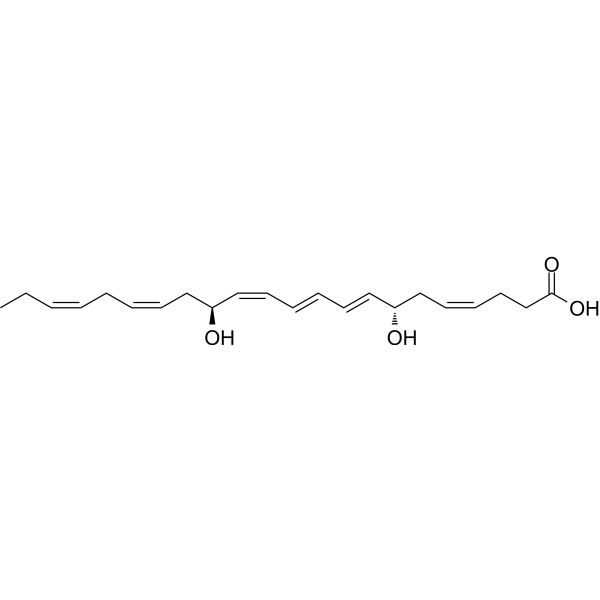
-
- HY-108630
-
U-73343
3 Publications Verification
|
Phospholipase
|
Others
|
|
U-73343, works as a protonophore, is an inactive analog of U-73122 and can be used as a negative control. U-73343 dose-dependently inhibits acid secretion irrespective of the stimulant. U-73122 is a phospholipase C (PLC) and 5-LO (5-lipoxygenase) inhibitor with an IC50 of 1-2.1 µM for PLC .
|
-
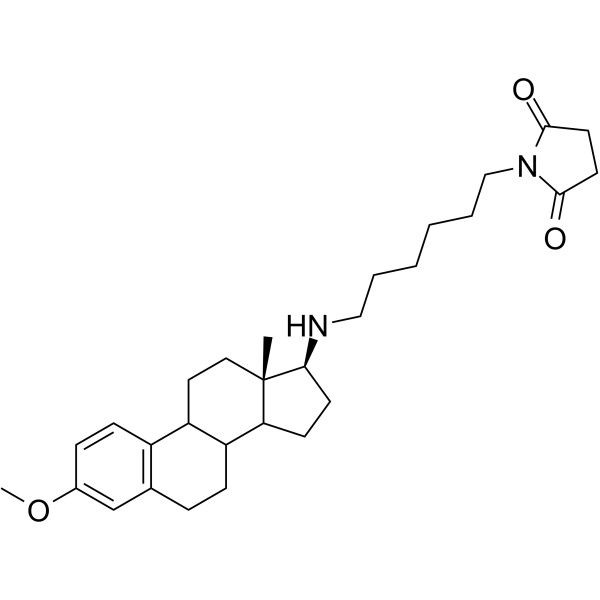
-
- HY-135416
-
|
|
Endogenous Metabolite
|
Infection
|
|
Streptolysin O, a group A streptococcal toxin, is a well-characterized oxygen-labile prototype of a cholesterol-binding bacterial exotoxin. Streptolysin O causes both lysis of cells and cardiotoxicity. Streptolysin O is widely used for the controlled permeabilization of cell membranes. Streptolysin O exists in two forms, a reduced active state and an oxidized reversibly inactive state .
|
-
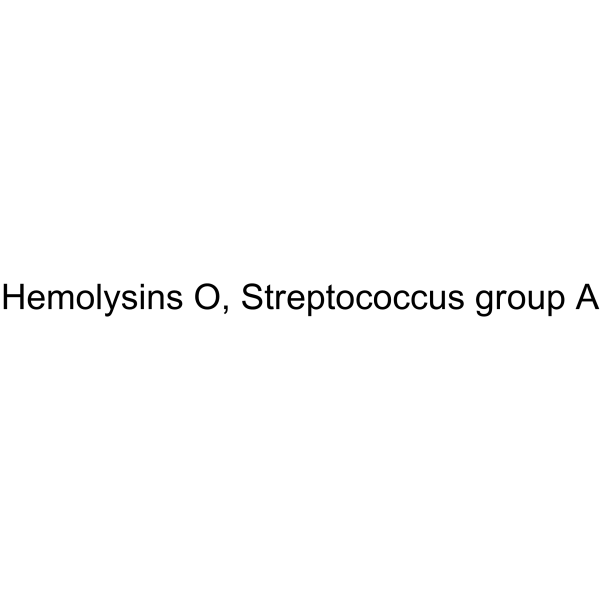
-
- HY-78931A
-
|
|
Others
|
Cancer
|
|
(R,S,S,R,S)-Boc-Dap-NE is the inactive isomer of Boc-Dap-NE (HY-78931), and can be used as an experimental control. Boc-Dap-NE, is an intermediate in the synthesis of Monomethyl auristatin E (HY-15162), which is an inhibitor of tubulin polymerization. Monomethyl auristatin E can be used to synthesize Antibody-Drug Conjugates (ADCs) as ADC Cytotoxin.
|
-

-
- HY-78931B
-
|
|
Others
|
Cancer
|
|
(S,S,S,S,R)-Boc-Dap-NE is the inactive isomer of Boc-Dap-NE (HY-78931), and can be used as an experimental control. Boc-Dap-NE, is an intermediate in the synthesis of Monomethyl auristatin E (HY-15162), which is an inhibitor of tubulin polymerization. Monomethyl auristatin E can be used to synthesize Antibody-Drug Conjugates (ADCs) as ADC Cytotoxin.
|
-
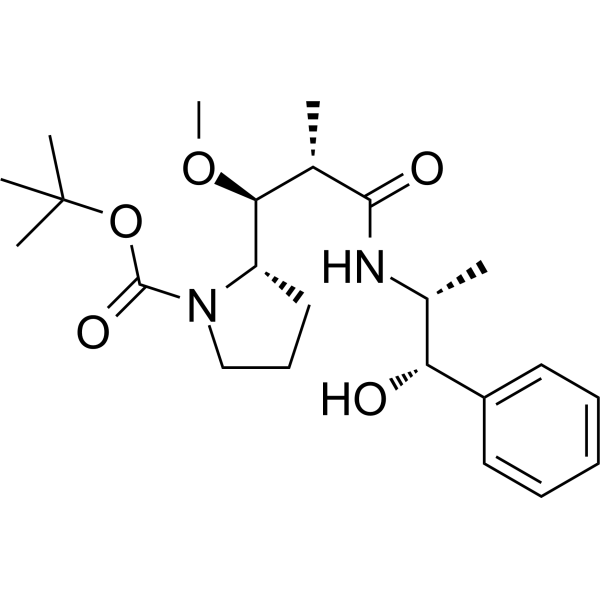
-
- HY-145082
-
|
|
Others
|
Others
|
|
4-Sulfo-N-(4-aminobenzyl)-1,8-naphthalimide potassium is an inactive 1,8-Naphthalimide derivative. 4-Sulfo-N-(4-aminobenzyl)-1,8-naphthalimide potassium can be used as a negative control for the clathrin inhibitor 3-Sulfo-N-benzyl-1,8-naphthalimide, potassium salt .
|
-

-
- HY-P5395
-
|
|
HIV
|
Others
|
|
TAT-GluR23A Fusion Peptide is a biological active peptide. (This is the GluR23A sequence, a control inactive peptide used as a mutant counterpart to glutamate receptor endocytosis inhibitor (GluR23Y), connected to an 11 amino acid cell permeable HIV Trans-Activator of Transcription (TAT) protein transduction domain (PTD). GluR23A is derived from GluR23Y amino acids 869 to 877, with Ala substituted for Tyr, and thus lacking essential phosphorylation sites.Control peptide of HY-P2259)
|
-

-
- HY-135416A
-
|
|
Endogenous Metabolite
|
Infection
|
|
Streptolysin O (≥1000000 units/mg) is a ≥1000000 units/mg Streptolysin O (HY-135416). Streptolysin O, a group A streptococcal toxin, is a well-characterized oxygen-labile prototype of a cholesterol-binding bacterial exotoxin. Streptolysin O causes both lysis of cells and cardiotoxicity. Streptolysin O is widely used for the controlled permeabilization of cell membranes. Streptolysin O exists in two forms, a reduced active state and an oxidized reversibly inactive state .
|
-

-
- HY-112306
-
|
DCC-2618
|
c-Kit
PDGFR
FLT3
VEGFR
Apoptosis
|
Cancer
|
|
Ripretinib (DCC-2618) is an orally bioavailable, selective KIT and PDGFRA switch-control inhibitor. Ripretinib (DCC-2618) targets and binds to both wild-type and mutant forms of KIT and PDGFRA specifically at their switch pocket binding sites, thereby preventing the switch from inactive to active conformations of these kinases and inactivating their wild-type and mutant forms. Ripretinib (DCC-2618) also inhibits multiple other kinase targets, such as FLT3 and KDR (or VEGFR-2) . DCC-2618 exerts antineoplastic effect and induces apoptosis .
|
-
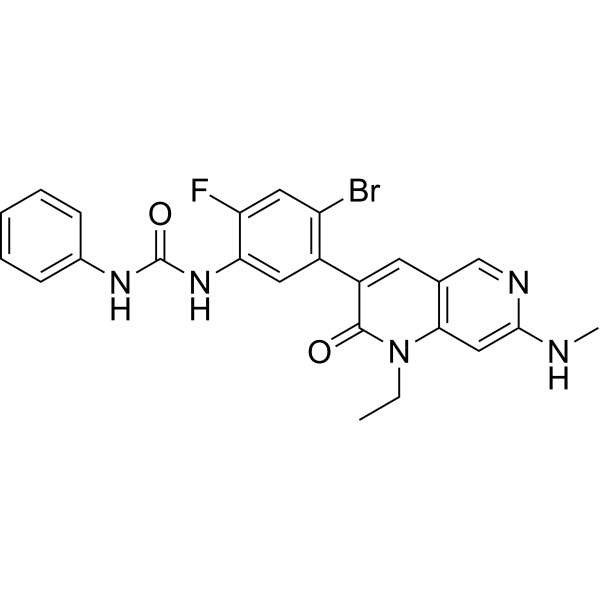
-
- HY-P2307A
-
|
|
iGluR
NO Synthase
|
Neurological Disease
|
|
Tat-NR2BAA TFA is the control peptide of Tat-NR2B9c (HY-P0117), inactive. The sequence of Tat-NR2BAA TFA is similar to Tat-NR2B9c, but it has a double-point mutation in the COOH terminal tSXV motif, making it incapable of binding PSD-95. Tat-NR2B9c is a membrane-permeant peptide and disrupts PSD-95/NMDAR binding, correlate with uncoupling NR2B- and/or NR2A-type NMDARs from PSD-95 .
|
-
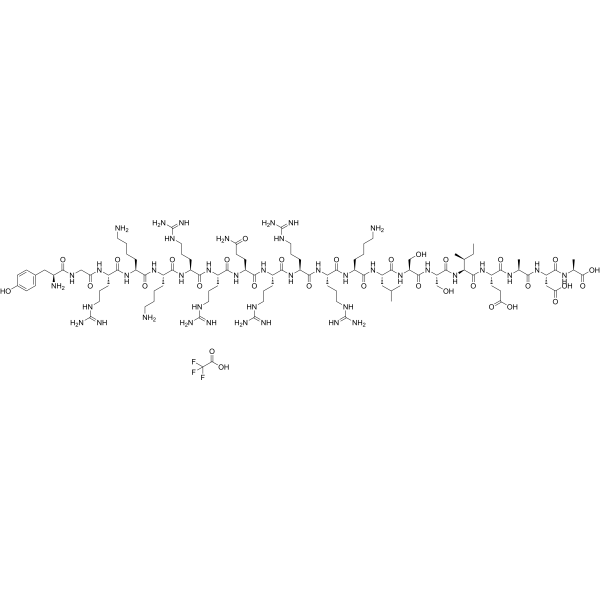
-
- HY-P2307
-
|
|
iGluR
NO Synthase
|
Neurological Disease
|
|
Tat-NR2BAA is the control peptide of Tat-NR2B9c (HY-P0117), inactive. The sequence of Tat-NR2BAA is similar to Tat-NR2B9c, but it has a double-point mutation in the COOH terminal tSXV motif, making it incapable of binding PSD-95. Tat-NR2B9c is a membrane-permeant peptide and disrupts PSD-95/NMDAR binding, correlate with uncoupling NR2B- and/or NR2A-type NMDARs from PSD-95 .
|
-
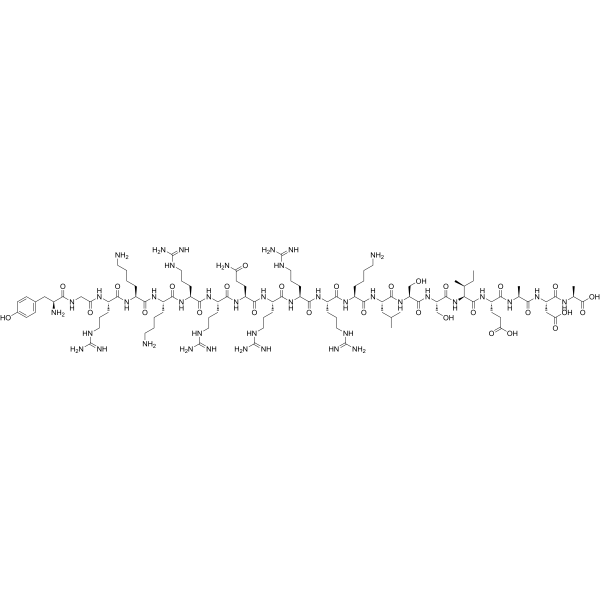
-
- HY-W011426
-
|
Propan-2-yl hexadecanoate
|
Biochemical Assay Reagents
Liposome
|
Others
|
|
Isopropyl palmitate is an fatty acid ester. Isopropyl palmitate can be used for design and characterization of bioactive bilayer films. The bilayer membrane not only has the ability to scavenge free radicals and inhibit lipid peroxidation, but also can inhibit the growth of known foodborne pathogens. Isopropyl palmitate can be used as an excipient, such as lubricant, oily carrier, solvent, controlled-release transdermal film. Pharmaceutical excipients, or pharmaceutical auxiliaries, refer to other chemical substances used in the pharmaceutical process other than pharmaceutical ingredients. Pharmaceutical excipients generally refer to inactive ingredients in pharmaceutical preparations, which can improve the stability, solubility and processability of pharmaceutical preparations. Pharmaceutical excipients also affect the absorption, distribution, metabolism, and elimination (ADME) processes of co-administered drugs .
|
-

| Cat. No. |
Product Name |
Type |
-
- HY-W011426
-
|
Propan-2-yl hexadecanoate
|
Drug Delivery
|
|
Isopropyl palmitate is an fatty acid ester. Isopropyl palmitate can be used for design and characterization of bioactive bilayer films. The bilayer membrane not only has the ability to scavenge free radicals and inhibit lipid peroxidation, but also can inhibit the growth of known foodborne pathogens. Isopropyl palmitate can be used as an excipient, such as lubricant, oily carrier, solvent, controlled-release transdermal film. Pharmaceutical excipients, or pharmaceutical auxiliaries, refer to other chemical substances used in the pharmaceutical process other than pharmaceutical ingredients. Pharmaceutical excipients generally refer to inactive ingredients in pharmaceutical preparations, which can improve the stability, solubility and processability of pharmaceutical preparations. Pharmaceutical excipients also affect the absorption, distribution, metabolism, and elimination (ADME) processes of co-administered drugs .
|
| Cat. No. |
Product Name |
Target |
Research Area |
-
- HY-P1849A
-
|
scJag-1 TFA
|
Peptides
|
Cardiovascular Disease
|
|
JAG-1, scrambled (scJag-1) TFA is a scrambled sequence of JAG-1 (Jagged-1 protein). JAG-1, scrambled TFA has a random sequence of the amino acids that are the same as the active fragment. JAG-1, scrambled TFA is usually used as a negative control .
|
-
- HY-P2670
-
|
|
Peptides
|
Others
|
|
SN50M, a mutant peptide of SN50 (HY-P0151), is a cell membrane-permeable inactive control peptide .
|
-
- HY-P1402
-
|
|
Peptides
|
Others
|
|
[Glu27]-PKC (19-36) is an inactive control for protein kinase C (PKC) (19-36). PKC (19-36) is a pseudosubstrate peptide inhibitor of protein kinase C, it may be responsible for maintaining the enzyme in the inactive form in the absence of allosteric activators such as phospholipids .
|
-
- HY-P1849
-
|
scJag-1
|
Peptides
|
Cardiovascular Disease
|
|
JAG-1, scrambled (scJag-1) is a scrambled sequence of JAG-1 (Jagged-1 protein). JAG-1, scrambled has a random sequence of the amino acids that are the same as the active fragment. JAG-1, scrambled is usually used as a negative control .
|
-
- HY-P2248
-
|
|
Peptides
|
Others
|
|
ELA-14 negative control, a peptide, is inactive. ELA-14 negative control is a negative control for ELA-14 .
|
-
- HY-P1312
-
|
|
Peptides
|
Others
|
|
LRGILS-NH2 is a reverse-sequence protease-activated receptor-2 (PAR-2)-inactive, negative control, and SLIGRL-NH2 is a PAR-2-activating peptide .
|
-
- HY-P1312A
-
|
|
Peptides
|
Others
|
|
LRGILS-NH2 TFA is a reverse-sequence protease-activated receptor-2 (PAR-2)-inactive, negative control, and SLIGRL-NH2 is a PAR-2-activating peptide .
|
-
- HY-P10168
-
|
|
Peptides
|
Others
|
|
11R-CaN-CON is a control inactive peptide and can be used as a negative control for 11R-CaN-AID (HY-P10167) .
|
-
- HY-P2250
-
|
ELA-32 negative control
|
Peptides
|
Others
|
|
ELA RR>GG (ELA-32 negative control), an ELABELA (ELA-32 human) mutant peptide, is inactive. ELA RR>GG is a negative control for ELABELA (HY-P2196) .
|
-
- HY-P3882
-
|
|
Amino Acid Derivatives
|
Neurological Disease
|
|
Fmoc-Ala-Glu-Gln-Lys-NH2 (AEQK) is a tetrapeptide. Fmoc-Ala-Glu-Gln-Lys-NH2 is the inactive control for Fmoc-Ala-Glu-Asn-Lys-NH2 (AENK) peptide inhibitor. AENK blocks proteolysis of UNC5C protein .
|
-
- HY-P5395
-
|
|
HIV
|
Others
|
|
TAT-GluR23A Fusion Peptide is a biological active peptide. (This is the GluR23A sequence, a control inactive peptide used as a mutant counterpart to glutamate receptor endocytosis inhibitor (GluR23Y), connected to an 11 amino acid cell permeable HIV Trans-Activator of Transcription (TAT) protein transduction domain (PTD). GluR23A is derived from GluR23Y amino acids 869 to 877, with Ala substituted for Tyr, and thus lacking essential phosphorylation sites.Control peptide of HY-P2259)
|
-
- HY-P2307A
-
|
|
iGluR
NO Synthase
|
Neurological Disease
|
|
Tat-NR2BAA TFA is the control peptide of Tat-NR2B9c (HY-P0117), inactive. The sequence of Tat-NR2BAA TFA is similar to Tat-NR2B9c, but it has a double-point mutation in the COOH terminal tSXV motif, making it incapable of binding PSD-95. Tat-NR2B9c is a membrane-permeant peptide and disrupts PSD-95/NMDAR binding, correlate with uncoupling NR2B- and/or NR2A-type NMDARs from PSD-95 .
|
-
- HY-P2307
-
|
|
iGluR
NO Synthase
|
Neurological Disease
|
|
Tat-NR2BAA is the control peptide of Tat-NR2B9c (HY-P0117), inactive. The sequence of Tat-NR2BAA is similar to Tat-NR2B9c, but it has a double-point mutation in the COOH terminal tSXV motif, making it incapable of binding PSD-95. Tat-NR2B9c is a membrane-permeant peptide and disrupts PSD-95/NMDAR binding, correlate with uncoupling NR2B- and/or NR2A-type NMDARs from PSD-95 .
|
| Cat. No. |
Product Name |
Category |
Target |
Chemical Structure |
Your information is safe with us. * Required Fields.
Inquiry Information
- Product Name:
- Cat. No.:
- Quantity:
- MCE Japan Authorized Agent:















































